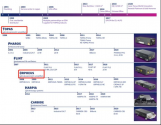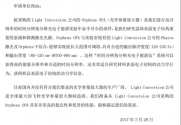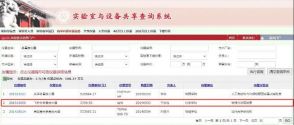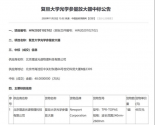Huawei Cloud gets world’s first cloud native satellite with sky computing constellation in space
December 10, 2021 By Amy Sarkar
On December 10, the world’s first cloud native satellite equipped with Sky Computing Constellation computing platform has successfully entered and operating stably in orbit verified Huawei Cloud reported by Chinese Media.
The Huawei Cloud “Cloud Edge Integrated” solution verified it in space for the first time. Now, this expermential satellites will be able to simultaneously call edge and central cloud resources in space. It also have AI capabilities and multi-task processing capabilities, which can maximize efficiency and response speed and help satellites enter the era of smart phones.
After successful verification, Huahuajia’s Huawei Cloud “Cloud Edge Integrated” solution will be deployed in batches in the six satellites of the first phase of the “Sky Computing Constellation” to form a collaborative computing network in space.It can better serve emergency communications in the future , Ecological monitoring, disaster prevention and mitigation, and urban construction.

The “Sky Computing Constellation” project was jointly initiated by Beijing University of Posts and Telecommunications’ Shenzhen Graduate School and Tianyi Research Institute. To provide an open source platform for on-orbit testing of aerospace computing integrated with production, education and research. Also, it can technical support for the development of my country’s 6G network, satellite Internet and other technologies.
Huawei Cloud said that as the first batch of cooperative joint manufacturing units, it will integrate edge computing and satellite computing platforms. So that satellites can simultaneously call edge and central cloud resources in space, and have AI capabilities and multitasking capabilities.
According to the test data through the coordinated estimation of satellites and ground stations, the calculation accuracy is improved by more than 50%, and the amount of data returned by the satellite can be reduced by 90%, and the satellite cloud Will enter – the original era.
With cloud-native edge computing, we can discard low-quality image data that is more than 50% covered by cloud and snow, through on-orbit AI estimation, reducing transmission pressure, and is effective. Huawei uses Cloud in central nodes with rich computing resources.
The high-precision AI model calculates image preprocessing, water area extraction, and monitoring report generation to reduce the time from the typical 1 day to 1 hour, which greatly improves emergency response times. In addition, Satellite Edge missions can be updated as needed. Through AI logic in orbit, mountain collapse risks are detected, hidden geological hazards are detected in advance, and early warnings are given by comparing images before and after heavy rains.
You are using an out of date browser. It may not display this or other websites correctly.
You should upgrade or use an alternative browser.
You should upgrade or use an alternative browser.
News on China's scientific and technological development.
- Thread starter Quickie
- Start date
AssassinsMace
Lieutenant General
Here is the Harvard Belfer Center Report (PDF version of the report inside the link):
The US can't do anything to stop China short of war. War and invasion and most importantly taking over and winning it is the only way they can stop China. What are the chances of that happening when Afghanistan happened? The US has to believe China cannot rise without the help of the West so therefore if the US can find and plug all the holes of technology leaking to China, they will be able to stop China. These are the people who thought just stopping the sale of semiconductor chips to China was enough to get China to surrender unconditionally. The opposite result in the most blowback nightmarish scenario is happening. Now they're going to lose it all on a stupid bet.
The list includes the fusion simulation of a magnetic confinement fusion reactor, fluid mechanics simulation of a full-size aerospace vehicle, dynamic simulation of a digital cell atomic system, as well as refined numerical weather forecasting.
It also covers efficient and high-throughput virtual drug screening, a super-scale artificial intelligence pre-training model, and high-resolution sky survey image processing for Five-hundred-meter Aperture Spherical Radio Telescope (FAST) observation data.
Look at the calibre of the Anglo sphere, look at their elites. Brexit happened in some part due to a Bollinger club like gamble, which Gordon zébrons ultimately lost, and now the Anglo elite and their fail sons are marching the world into another world war.The US can't do anything to stop China short of war. War and invasion and most importantly taking over and winning it is the only way they can stop China. What are the chances of that happening when Afghanistan happened? The US has to believe China cannot rise without the help of the West so therefore if the US can find and plug all the holes of technology leaking to China, they will be able to stop China. These are the people who thought just stopping the sale of semiconductor chips to China was enough to get China to surrender unconditionally. The opposite result in the most blowback nightmarish scenario is happening. Now they're going to lose it all on a stupid bet.
Why send the most emasculating weirdest looking person Taiwan?View attachment 79871
"I don't mean to be rude, but you're all suck compare to Taiwan"
Generally speaking, software applications can be classified as consumer, commercial, industrial, aerospace and military, in order of availability and reliability. Latency and throughput are the two most important performance measures in almost all of the real-time or near real-time applications. Before 5G, no commercial mobile technologies are viable for industrial, aerospace or military applications. Note that I don't use IoT here. Nowadays, even some consumer/commercial applications require ultra low latency.Why is low latency important?
When Xinjiang has faster internet than north America.
URUMQI -- The first plateau 5G base station in Northwest China's Xinjiang Uygur autonomous region started to provide 5G services on Thursday.
Standing at 3,700 meters above sea level, the 5G base station was built in Xeyidula township, Pishan county, Hotan prefecture, at the foot of the Karakorum Mountains, according to the Communications Administration of Xinjiang.
China's four major telecom firms of China Telecom, China Mobile, China Unicom and China Tower cooperated to build, use and maintain the 5G base station. The signal of the base station covers a 5-km radius.
With an average elevation of 4,600 meters, the border town Xeyidula is a very popular tourist town, receiving about 2,000 tourists every day in summer and autumn.
"Building a 5G base station on the plateau is a major challenge for constructors. But the operation of the base station helps address the imbalanced and inadequate development of telecommunications services, and helps consolidate poverty alleviation achievements in border areas and realize rural vitalization," said Ma Zhuqing, head of the administration.
More than 12,800 5G base stations have been built in Xinjiang this year, bringing the number of 5G base stations across the region to over 19,000, with an investment of nearly 2 billion yuan ($313.5 million), according to the Communications Administration of Xinjiang.
URUMQI -- The first plateau 5G base station in Northwest China's Xinjiang Uygur autonomous region started to provide 5G services on Thursday.
Standing at 3,700 meters above sea level, the 5G base station was built in Xeyidula township, Pishan county, Hotan prefecture, at the foot of the Karakorum Mountains, according to the Communications Administration of Xinjiang.
China's four major telecom firms of China Telecom, China Mobile, China Unicom and China Tower cooperated to build, use and maintain the 5G base station. The signal of the base station covers a 5-km radius.
With an average elevation of 4,600 meters, the border town Xeyidula is a very popular tourist town, receiving about 2,000 tourists every day in summer and autumn.
"Building a 5G base station on the plateau is a major challenge for constructors. But the operation of the base station helps address the imbalanced and inadequate development of telecommunications services, and helps consolidate poverty alleviation achievements in border areas and realize rural vitalization," said Ma Zhuqing, head of the administration.
More than 12,800 5G base stations have been built in Xinjiang this year, bringing the number of 5G base stations across the region to over 19,000, with an investment of nearly 2 billion yuan ($313.5 million), according to the Communications Administration of Xinjiang.
Last month, some users claimed on Twitter that Lithuania dared to "provoke" China because of its technological advantages in the field of optical equipment-lasers, optical parametric amplifiers and transient absorption produced by Lithuania's Light Conversion Company. Spectrum is widely used by top universities in China. Among them, the optical parametric amplifier is truly a card-neck product like the chip. The user stated that Lithuania can sanction one-third of scientific research projects in physical materials and chemistry in the Natural Science Foundation of China. A further public search revealed that similar claims had been circulating on Zhihu as early as August this year.

Is it clear that Light Conversion monopolizes the Chinese market?
Light Conversion was established in 1994 in Vilnius, the capital of Lithuania, backed by the Vilnius University Laser Research Center. It is an internationally renowned manufacturer of optical equipment. In 2016, it opened a branch in China and officially entered the Chinese market. The company's product catalog shows that its optical parametric amplifiers (optical parametric amplifiers) mainly have two models, TOPAS and ORPHEUS. Among them, TOPAS has been put into production as early as the 1990s.

According to the official website of Light Laser, TOPAS was designed by Romualdas Danielius, the company's chief scientist. Due to its popularity, TOPAS has even become a proper term in academia. Indeed, if you search for the keyword "topas optical parametric amplifier" on Google Scholar, you can find a lot of related research mentioning TOPAS.
A public search found that many domestic colleges and universities do use optical parametric amplifiers produced by Light Laser. For example, in 2017, the School of Physics and Electronics of Central South University purchased the ORPHEUS optical parametric amplifier produced by Laite Laser. The “Reason for Application” column stated that there are currently no optical parametric amplifier manufacturers with symbols and requirements in China, and Light Laser’s ORPHEUS has high stability and excellent performance. "Public Procurement Solicitation" shows that the price of this ORPHEUS is 43,500 euros, which is equivalent to about 310,000 yuan.

In 2018, the Department of Chemistry of Zhejiang University also purchased a PHAROS femtosecond laser and its supporting optical parametric amplifier.

He Peng, PhD in optical engineering from Xidian University, commented on the aforementioned users' answers that there are 1,000 optical parametric amplifiers produced by Light Laser in China. The Investigation from a doctoral student in optics of the Chinese Academy of Sciences led to the understanding that most of the optical parametric amplifiers used in domestic university laboratories come from Lite Laser.
Can Light Conversion sanction Chinese research projects?
It has to be admitted that the statement that "Lite Laser's optical parametric amplifier monopolizes the Chinese market" is not an exaggeration. However, it is worth noting that the application of optical parametric amplifiers is actually very limited. Except for scientific research projects involving femtosecond laser experiments, it is almost invisible in the civilian field. Therefore, the market demand for optical parametric amplifiers is small and large. Very limited.
In addition, the design and manufacture of the optical parametric amplifier itself does not involve the "stuck neck" technology. On the contrary, the technology itself is quite mature.
The optical parametric amplifier is a device that uses the nonlinear interaction of parameters to achieve laser wavelength conversion, and needs to be used in conjunction with the laser. In addition to the femtosecond optical parametric amplifier mentioned above, picosecond optical parametric amplifiers are also widely used. The main manufacturer of this picosecond optical parametric amplifier is another company with Lithuanian genes-EKSPLA.
Qian Shixiong and Wang Gongming called the optical parametric amplification process "a typical three-wave mixing process" in the book "Nonlinear Optics-Principles and Progress". To put it simply, a strong pump light with a higher frequency and a weak signal light with a lower frequency are simultaneously input into the corresponding non-linear crystal, and produce difference frequency optical radiation, that is, an idle frequency light wave (idler).
Shen Yuanyang concluded in his article "Fifty Years of Nonlinear Optics" that the development of nonlinear optics can be roughly divided into three different periods: 1961-1965, when new nonlinear optical effects appeared in large numbers; 1965-1969 At the same time as the emergence of new nonlinear optical effects, scientists are committed to studying the effects that have been discovered, and focusing on the development of related optical devices; after 1970, nonlinear optical research further expanded its dimensions and scope of application.
It can be said that as of today, both the theory of nonlinear optics and the research on optical parametric amplification have been very mature, and there is no excessive theoretical barrier. In fact, many outstanding Chinese scholars have produced a wealth of academic papers and works in this field, and some domestic research teams have also developed their own optical parametric amplifiers. For example, among the three optical parametric amplifiers currently held by Peking University, one is self-made by the physical chemistry laboratory.

The above-mentioned doctoral students pointed out that the relatively low cost and the binding relationship with laser manufacturers in many other countries will help Lithuanian enterprises to form a monopoly in the field of optical parametric amplifier manufacturing.
Indeed, Laite Laser is not the only brand selling optical parametric amplifiers. For example, in the results of the instrument query of the Peking University laboratory, after checking the “High Energy Optical Parametric Amplifier” purchased in 2014, it was found that the manufacturer of the instrument was a US company named “Coherent, Inc.”. But the model is the TOPAS mentioned above, designed by Professor Danielius. The TOPAS of Coherent Company is closely related to the TOPAS of Light Laser.
Coincidentally, in November 2020, Fudan University purchased an optical parametric amplifier from Spectra-Physics, a subsidiary of Newport Corporation, and also reached a close cooperation with LightTech Laser in the form of "OEM".

The aforementioned doctoral student stated that, under normal circumstances, optical parametric amplifiers will be packaged and sold to laboratories with more expensive lasers for subsequent supporting use and after-sales maintenance. Therefore, although the production of lasers is still in the hands of Coherence and Spectroscopy Physics, this form of packaged sales objectively helps Laite Laser to expand the optical parametric amplifier market. And this long-term mutual promotion of cooperative relations is exactly what Chinese companies wishing to enter the field of optical parametric amplifier manufacturing cannot currently reach.
From another level, the reason why the above-mentioned optical instrument companies are more inclined to cooperate with Light Laser is that in addition to the reasons of production technology and product quality, relatively low manufacturing and maintenance costs are also important considerations.
Statistics Lithuania (Statistics Lithuania) data show that the labor price of manufacturing in 2020 is about 1433.70 euros/month (about 10,300 yuan). According to data from the Bureau of Labor Statistics, in December 2020, the labor price of manufacturing workers was US$23.23 per hour (approximately RMB 147.44). Calculated on the basis of 176 hours of work per month (22 days a month, 8 hours a day), the labor price of the US manufacturing industry is about 2.5 times that of Lithuania.
In addition, after years of development, Lithuania has formed a complete optical component manufacturing industry chain, which has greatly reduced the production cost of mass production of optical parametric amplifiers. EKSMA, a subsidiary of EKSPLA and an optical component manufacturer mentioned above, is a typical example.
At present, the optical parametric amplifier has not been put into mass production in China. On the one hand, the reasons for market demand have already been mentioned; on the other hand, the retail price of optical components is high. At this stage, even if they are manufactured and sold, they do not have a price advantage compared to Lithuanian enterprises that have formed a complete system. . Therefore, if Chinese companies want to take over the production and manufacture of optical parametric amplifier batons from Lithuanian companies, the most important thing to overcome is not so much technical difficulties, but rather perfecting the industrial chain and compressing the production of supporting components under the premise of ensuring quality and cost.
In summary, the optical parametric amplifier produced by Light Laser in Lithuania has a good reputation in the market and is widely used by various academic research institutions, regardless of whether it is on a global scale or in China. However, the statement that "optical parametric amplifier is a card-neck product like a chip" is an overstatement: related theories and technologies are already very mature, but due to their narrow use and limited market demand, large-scale production has not yet been formed in China. Formed the appearance of "monopoly".

Is it clear that Light Conversion monopolizes the Chinese market?
Light Conversion was established in 1994 in Vilnius, the capital of Lithuania, backed by the Vilnius University Laser Research Center. It is an internationally renowned manufacturer of optical equipment. In 2016, it opened a branch in China and officially entered the Chinese market. The company's product catalog shows that its optical parametric amplifiers (optical parametric amplifiers) mainly have two models, TOPAS and ORPHEUS. Among them, TOPAS has been put into production as early as the 1990s.

According to the official website of Light Laser, TOPAS was designed by Romualdas Danielius, the company's chief scientist. Due to its popularity, TOPAS has even become a proper term in academia. Indeed, if you search for the keyword "topas optical parametric amplifier" on Google Scholar, you can find a lot of related research mentioning TOPAS.
A public search found that many domestic colleges and universities do use optical parametric amplifiers produced by Light Laser. For example, in 2017, the School of Physics and Electronics of Central South University purchased the ORPHEUS optical parametric amplifier produced by Laite Laser. The “Reason for Application” column stated that there are currently no optical parametric amplifier manufacturers with symbols and requirements in China, and Light Laser’s ORPHEUS has high stability and excellent performance. "Public Procurement Solicitation" shows that the price of this ORPHEUS is 43,500 euros, which is equivalent to about 310,000 yuan.

In 2018, the Department of Chemistry of Zhejiang University also purchased a PHAROS femtosecond laser and its supporting optical parametric amplifier.

He Peng, PhD in optical engineering from Xidian University, commented on the aforementioned users' answers that there are 1,000 optical parametric amplifiers produced by Light Laser in China. The Investigation from a doctoral student in optics of the Chinese Academy of Sciences led to the understanding that most of the optical parametric amplifiers used in domestic university laboratories come from Lite Laser.
Can Light Conversion sanction Chinese research projects?
It has to be admitted that the statement that "Lite Laser's optical parametric amplifier monopolizes the Chinese market" is not an exaggeration. However, it is worth noting that the application of optical parametric amplifiers is actually very limited. Except for scientific research projects involving femtosecond laser experiments, it is almost invisible in the civilian field. Therefore, the market demand for optical parametric amplifiers is small and large. Very limited.
In addition, the design and manufacture of the optical parametric amplifier itself does not involve the "stuck neck" technology. On the contrary, the technology itself is quite mature.
The optical parametric amplifier is a device that uses the nonlinear interaction of parameters to achieve laser wavelength conversion, and needs to be used in conjunction with the laser. In addition to the femtosecond optical parametric amplifier mentioned above, picosecond optical parametric amplifiers are also widely used. The main manufacturer of this picosecond optical parametric amplifier is another company with Lithuanian genes-EKSPLA.
Qian Shixiong and Wang Gongming called the optical parametric amplification process "a typical three-wave mixing process" in the book "Nonlinear Optics-Principles and Progress". To put it simply, a strong pump light with a higher frequency and a weak signal light with a lower frequency are simultaneously input into the corresponding non-linear crystal, and produce difference frequency optical radiation, that is, an idle frequency light wave (idler).
Shen Yuanyang concluded in his article "Fifty Years of Nonlinear Optics" that the development of nonlinear optics can be roughly divided into three different periods: 1961-1965, when new nonlinear optical effects appeared in large numbers; 1965-1969 At the same time as the emergence of new nonlinear optical effects, scientists are committed to studying the effects that have been discovered, and focusing on the development of related optical devices; after 1970, nonlinear optical research further expanded its dimensions and scope of application.
It can be said that as of today, both the theory of nonlinear optics and the research on optical parametric amplification have been very mature, and there is no excessive theoretical barrier. In fact, many outstanding Chinese scholars have produced a wealth of academic papers and works in this field, and some domestic research teams have also developed their own optical parametric amplifiers. For example, among the three optical parametric amplifiers currently held by Peking University, one is self-made by the physical chemistry laboratory.

The above-mentioned doctoral students pointed out that the relatively low cost and the binding relationship with laser manufacturers in many other countries will help Lithuanian enterprises to form a monopoly in the field of optical parametric amplifier manufacturing.
Indeed, Laite Laser is not the only brand selling optical parametric amplifiers. For example, in the results of the instrument query of the Peking University laboratory, after checking the “High Energy Optical Parametric Amplifier” purchased in 2014, it was found that the manufacturer of the instrument was a US company named “Coherent, Inc.”. But the model is the TOPAS mentioned above, designed by Professor Danielius. The TOPAS of Coherent Company is closely related to the TOPAS of Light Laser.
Coincidentally, in November 2020, Fudan University purchased an optical parametric amplifier from Spectra-Physics, a subsidiary of Newport Corporation, and also reached a close cooperation with LightTech Laser in the form of "OEM".

The aforementioned doctoral student stated that, under normal circumstances, optical parametric amplifiers will be packaged and sold to laboratories with more expensive lasers for subsequent supporting use and after-sales maintenance. Therefore, although the production of lasers is still in the hands of Coherence and Spectroscopy Physics, this form of packaged sales objectively helps Laite Laser to expand the optical parametric amplifier market. And this long-term mutual promotion of cooperative relations is exactly what Chinese companies wishing to enter the field of optical parametric amplifier manufacturing cannot currently reach.
From another level, the reason why the above-mentioned optical instrument companies are more inclined to cooperate with Light Laser is that in addition to the reasons of production technology and product quality, relatively low manufacturing and maintenance costs are also important considerations.
Statistics Lithuania (Statistics Lithuania) data show that the labor price of manufacturing in 2020 is about 1433.70 euros/month (about 10,300 yuan). According to data from the Bureau of Labor Statistics, in December 2020, the labor price of manufacturing workers was US$23.23 per hour (approximately RMB 147.44). Calculated on the basis of 176 hours of work per month (22 days a month, 8 hours a day), the labor price of the US manufacturing industry is about 2.5 times that of Lithuania.
In addition, after years of development, Lithuania has formed a complete optical component manufacturing industry chain, which has greatly reduced the production cost of mass production of optical parametric amplifiers. EKSMA, a subsidiary of EKSPLA and an optical component manufacturer mentioned above, is a typical example.
At present, the optical parametric amplifier has not been put into mass production in China. On the one hand, the reasons for market demand have already been mentioned; on the other hand, the retail price of optical components is high. At this stage, even if they are manufactured and sold, they do not have a price advantage compared to Lithuanian enterprises that have formed a complete system. . Therefore, if Chinese companies want to take over the production and manufacture of optical parametric amplifier batons from Lithuanian companies, the most important thing to overcome is not so much technical difficulties, but rather perfecting the industrial chain and compressing the production of supporting components under the premise of ensuring quality and cost.
In summary, the optical parametric amplifier produced by Light Laser in Lithuania has a good reputation in the market and is widely used by various academic research institutions, regardless of whether it is on a global scale or in China. However, the statement that "optical parametric amplifier is a card-neck product like a chip" is an overstatement: related theories and technologies are already very mature, but due to their narrow use and limited market demand, large-scale production has not yet been formed in China. Formed the appearance of "monopoly".
